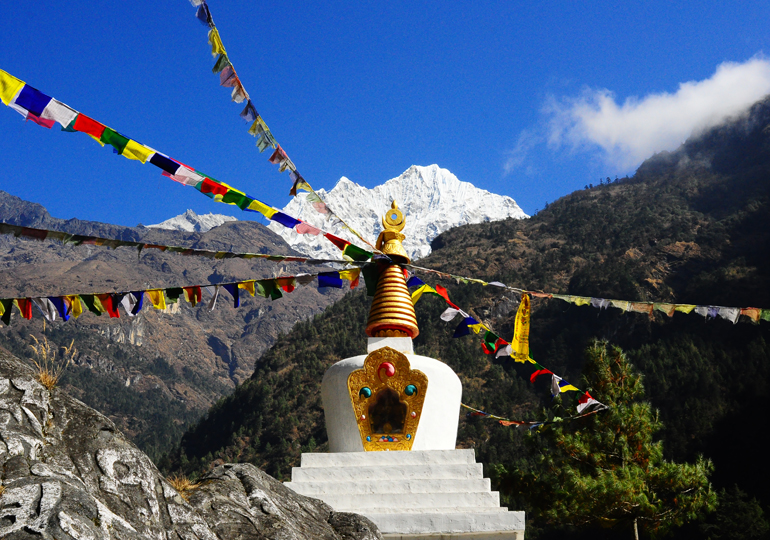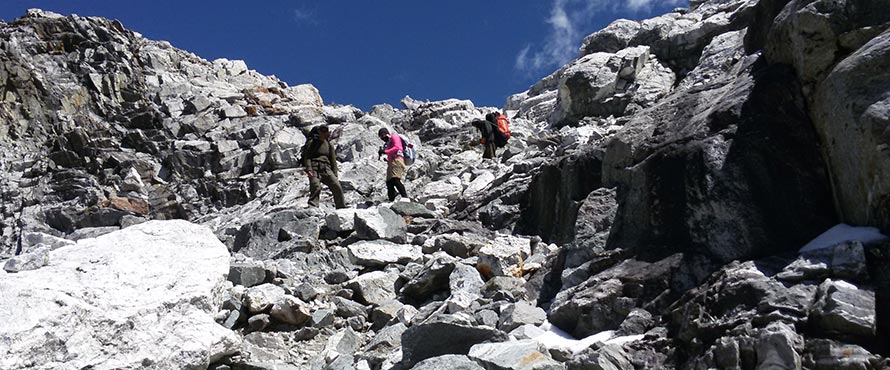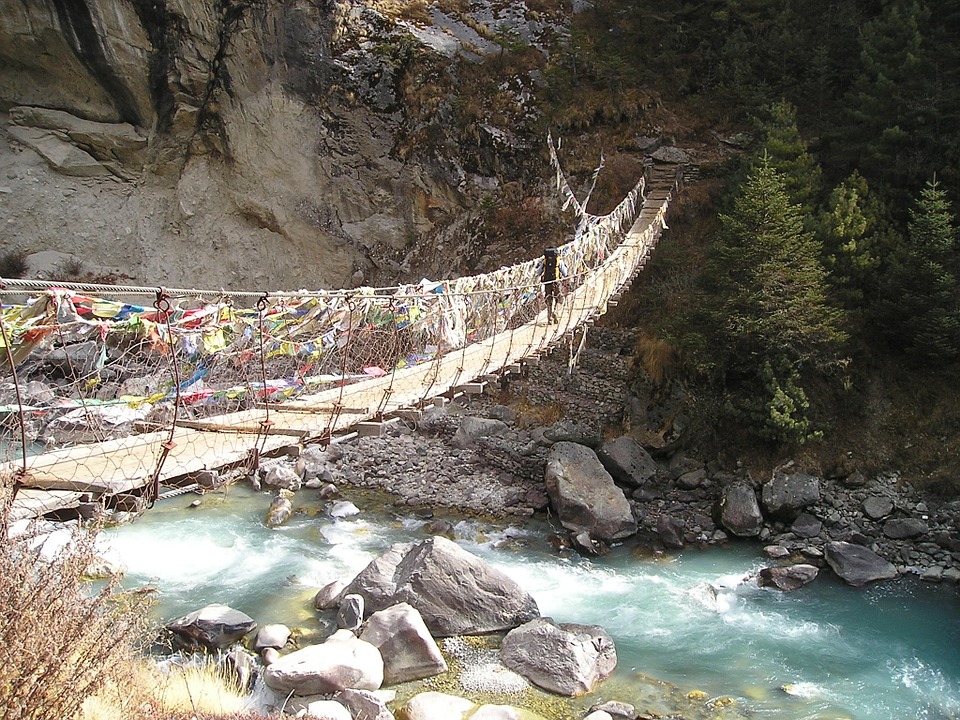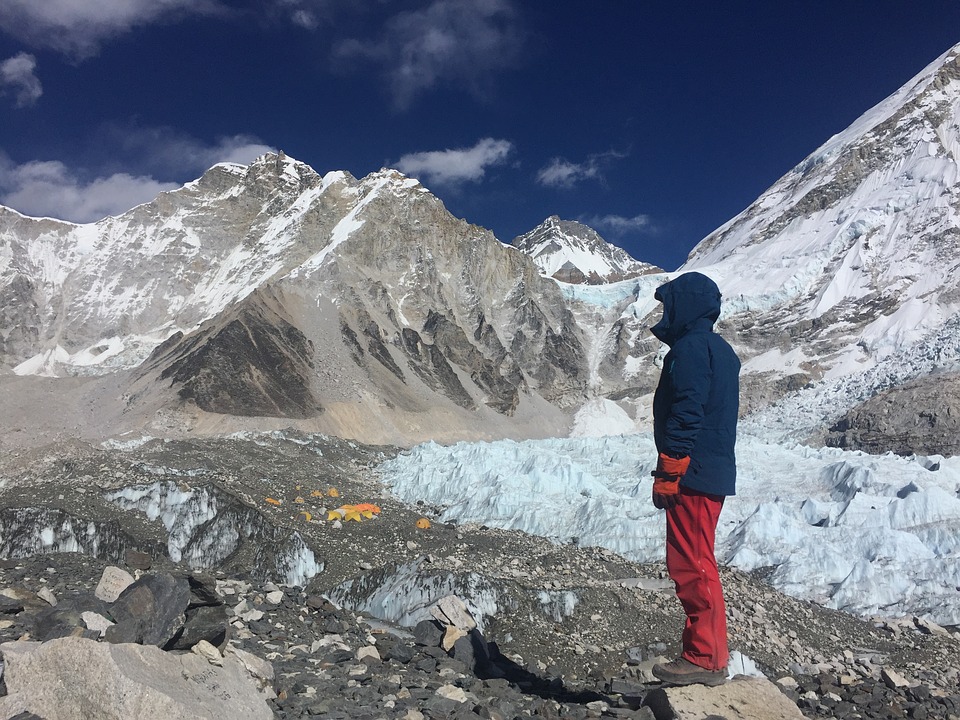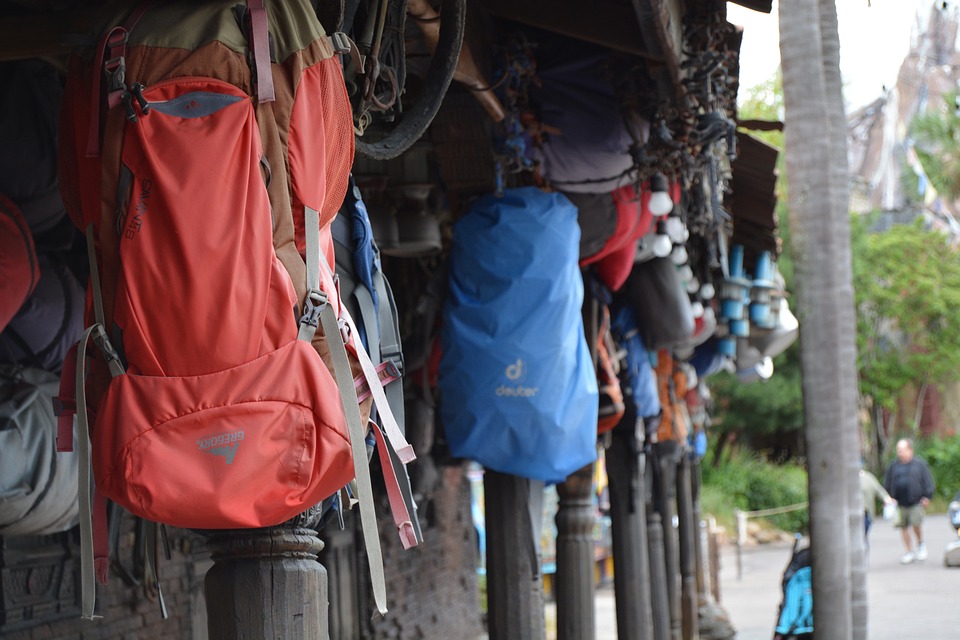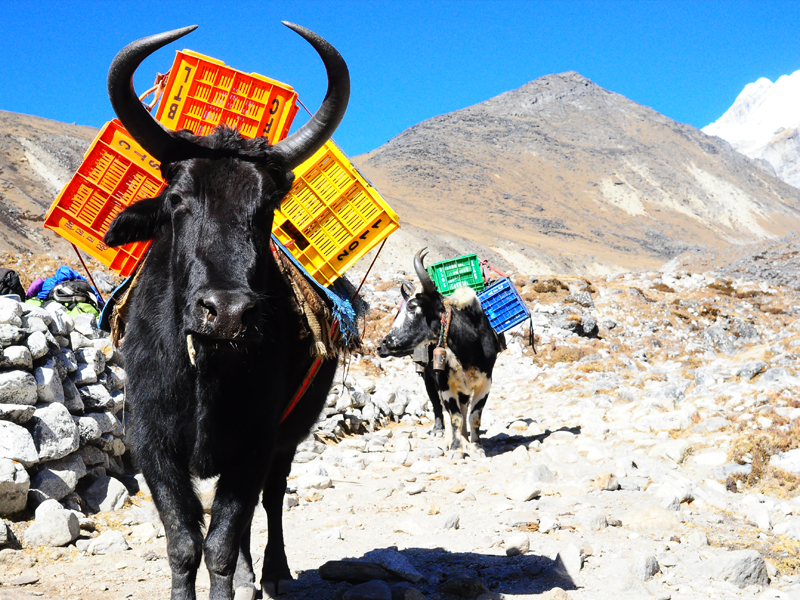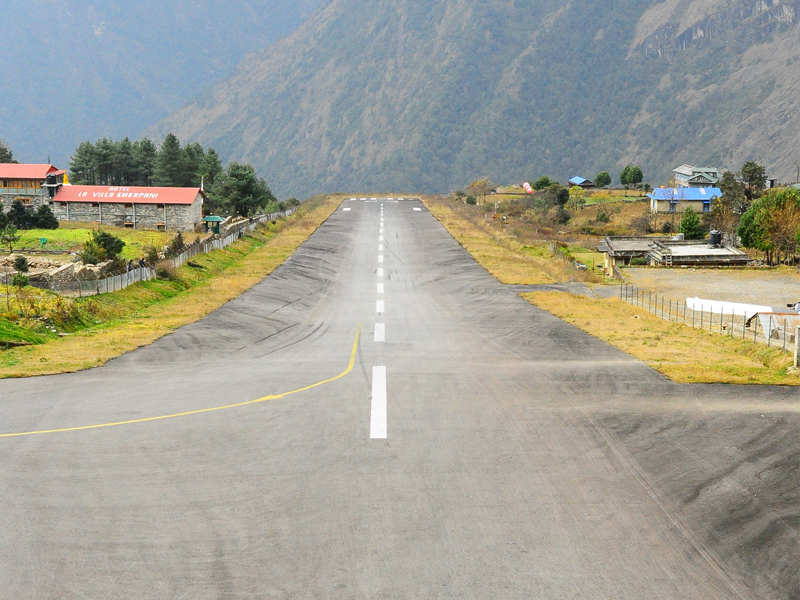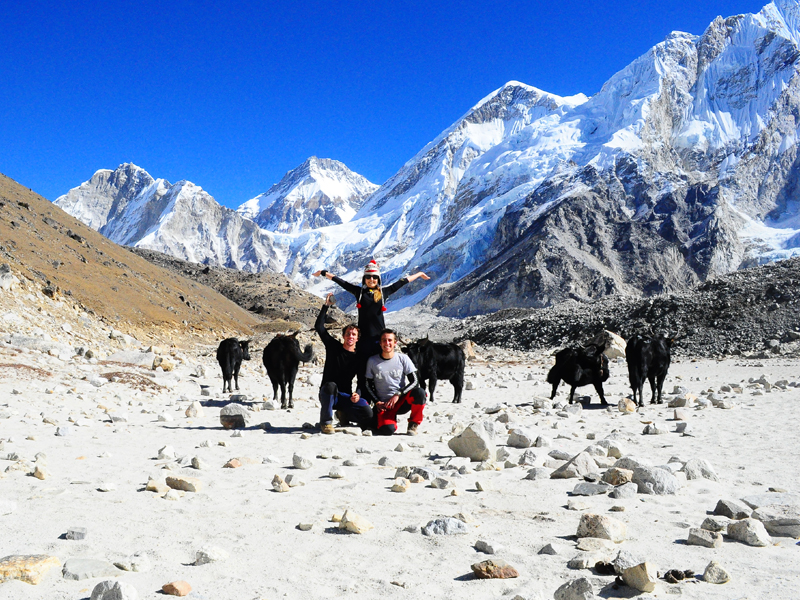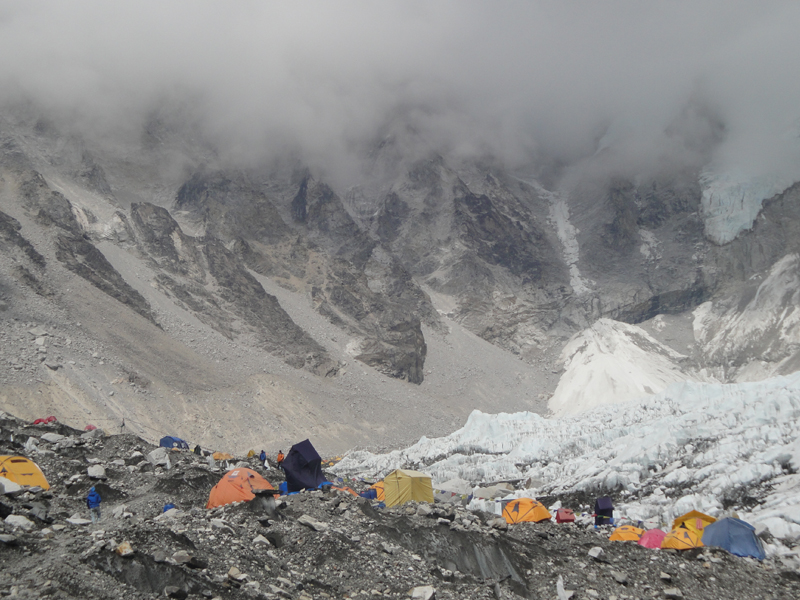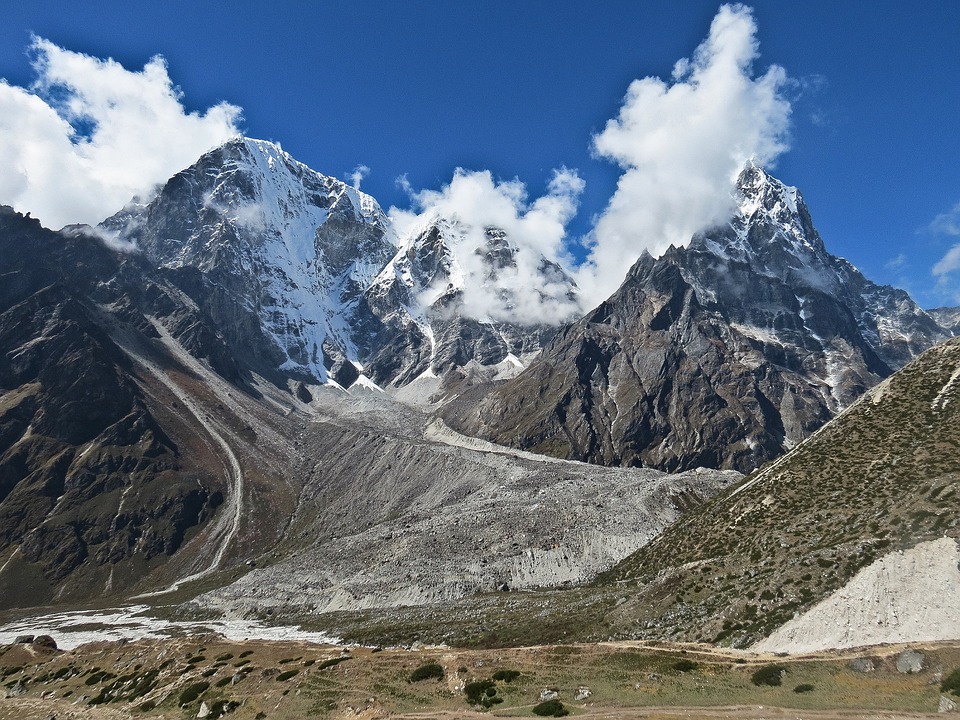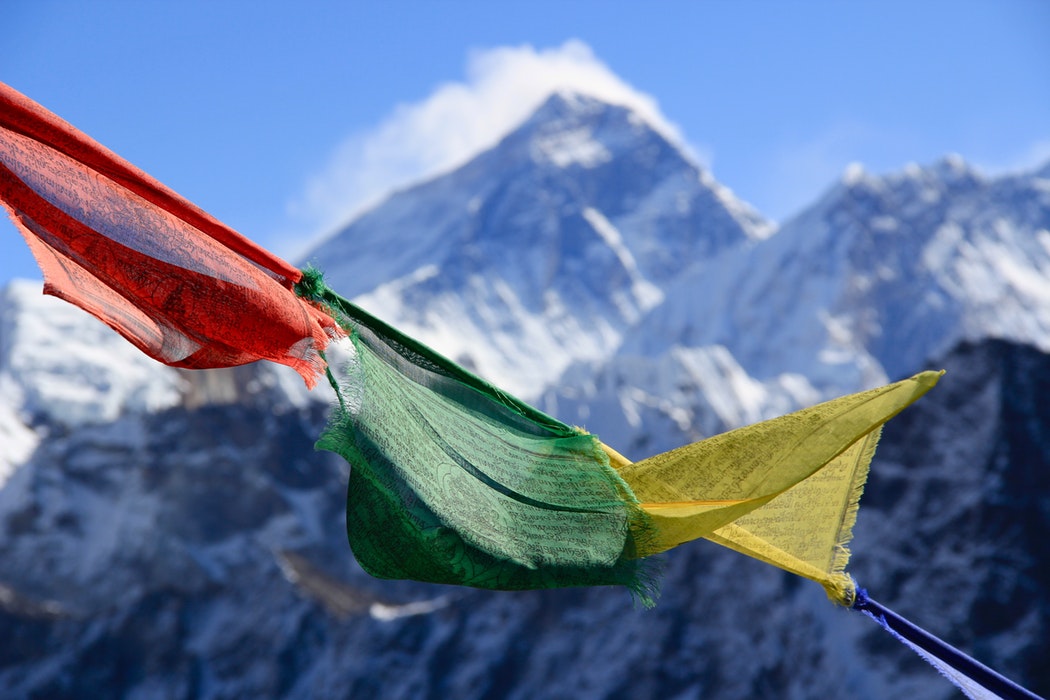18 Days Everest Three Passes Trekking
Everest Three Passes trek is the best option for those who is in very good shape and seeking a true adventure experience as this trek cover 3 high passes Kongma, La (5,535m), Cho-la (5,420m) and Renjo-La (5,340m). This trek also take you to famous destinations such as Everest Base Camp, Kala patthar, Gokyo Ri, Dingboche Village, Monastery Village Thame, Khumbu Glacier, Ngozumpa Glacier and more. Your eyes will enjoy more than 50 snowcapped mountains, including Mt. Makalu, Mt. Choyu, Mt. Lhotse and Mt. Everest which all are higher than 8,000 meters.
This trip start from Kathmandu with scenic flight to Lukla and head towards phakding Village. Namche Bazaar, the entrance of Everest to come next followed by Tangboche, Dingboche, Chhukung and crossing first pass of Kongma-La, Lobuche, Gorakshep, EBC and Kalapatthar to explore . En route to Gokyo, cross the Cho-La and to Thame Village crosssing Renjo-la . From Thame, we stroll back to Namche and finally Lukla again to end the trip.
DAY 1: Arrival in Kathmandu (1,370 metres)
Upon arrival at Tribhuwan Intl Airport in Kathmandu, a representative will be waiting, well in time, to welcome you to this land of towering Himalayas. Once reaching your hotel in a car from the airport, all you need to do is check in and enjoy the refreshment served. We then visit the local office for discussion on trekking, introduction to the guide and porter and settlement of dues if any.
Since you will still have some time left for a walk around Thamel, you can do so if you please. And of course you can join a tour in Kathmandu.
DAY 2: Kathmandu to Lukla (2,840 metres) and Lukla to Phakding (2,610 metres) - 3-4 hours walk
We fly to Lukla from Kathmandu in the morning. This 30-minute flight comes with spectacular views of the hills and the Himalayas, forcing many to take their cameras out or simply use their mobile phones with attempts to capturing the beauty.
We walk to Phakding Village for 3 to 4 hours after breakfast in Lukla. The trail is relatively comfortable and passes through four Sherpa villages. Houses with stone walls and colourful roofs, huge prayer stones with mantras from the teachings of Buddha carved in them, monasteries with busy budding Lamas, several mountains already in sight and rivers and waterfalls along the way, the trail already offers us a glimpse of what to expect.
Once in Phakding, one thing we can do is walk around the village or just relax on a bench in the porch of the hotel and absorb as much as we can after lunch. Spend the night in a hotel.
DAY 3: Phakding to Namche Bazaar (3,440 meters) - 5-6 hours walk
After breakfast, we walk for about 2 hours to Jorsalle Village for lunch. The route starts along the banks of Dudhkoshi River and crosses two suspension bridges before reaching Monjo Village. A 20-minute descent towards the end, finally, leads to Jorsalle Village, the entrance to the Sagarmatha National Park as well as the last village until Namche Bazaar.
After lunch, we walk for around 3 hours to Namche Bazaar. With the raging Dudhkoshi River mostly to the left for about half an hour before crossing a suspension bridge, the trail in its final 2 hours ascends through a pine forest. In reaching Namche, the administrative headquarter of the Khumbu Region, the ascent often demands a little extra even from seasoned legs.
Spend the night in a hotel in Namche.
DAY 4: A day of acclimatization at Namche Bazaar
It’s time for a trip to Sagarmatha National Park Museum after breakfast. Most people use their time at the Museum trying to gain some insight into the Everest Region – about the highest peaks, animals and vegetation that rule the region as well as the Sherpa culture and experiences of many trekkers and climbers.
We then leave the Museum and walk for about an hour to the Everest View Hotel for lunch. Constructed on a site in an altitude higher than any other on earth and ideally positioned, the hotel presents all its guests with ample individual space to appreciate the grandeur – a typical Sherpa village in the Khumjung Valley below to the North-West; on a hilltop above the village, the Khumjung Monastery, where a preserved skull which the locals believe to be that of a Yeti can be witnessed upon request.
Mt Khumbila, a massive rocky elevation worshiped as a deity by the locals and, thereby, a restricted peak for climbing, right above the valley; and to the North, captivating views of the Himalayas, including Mt Everest, Mt Lhotse and the beautiful Ama Dablem.
After climbing down to Namche Bazaar in the afternoon, a walk around the Bazaar is a preferred involvement to some and indulgence to others. Spend the night in the hotel.
Day 5: Namche Bazaar to Tyangboche (3,867 metres) - 5-6 hours walk
We start trek after breakfast and stop at Thanga for lunch after about 3 hours’ walk. The comfort of the trail up to Kyangzuma Village ends with the moderately challenging descent to Thanga. In Thanga, a pretty small settlement with three constructions at most, the trek stops for lunch in a teahouse.
While the food is prepared, many people find waiting an experience of its own – the rumbling of Dudkhoshi River from the deep gorge below reaching the eardrums from the right, the eyes exploring the presence of the pine and rhododendron trees densely populated in the area, a gentle breeze caressing the hair while waiting for lunch hungry after several hours of walk.
After lunch, we walk for around 3 hours to Tyangboche. From here on, the trail ascends sharply mostly through forests filled with pine and rhododendron trees all the way to Tyangboche. A spectacular view of the beautiful Mt Ama Dablam meets the eyes as soon as they enter the village. The next to capture the attention is the biggest monastery in the Khumbu Region, the Tyanboche Monastry.
The settlement presents a typical picture of a village in the laps of the Himalayas – houses made of stones in a cluster separated by narrow alleyways, a monastery and/or a temple highlighting the beliefs of the people, people going about displaying a simple way of life, a forest nearby, a river flowing pretty close and between two the snow caped Himalayas.
Spend the night in a hotel in Tyangboche.
DAY 6: Tyangboche to Dingboche (4,410 metres) - 5-6 hours walk
After breakfast, we walk for about 3 hours to Pangboche Village for lunch. With a downhill to the village of Diboche before a long gradual ascent, through a rhododendron forest, across a bridge, the trail finally brings its travelers to Pangboche Village. With narrow footpaths carved along the edges of hilltops, parts of the route demand alertness while being constantly drawn by the breathtaking views on offer in front, now that Mt Ama Dablam gets closer and closer with every step forward.
After lunch in Pangboche, we start walking again for about 3 hours to Dingboche. With the magnificent Mt Ama Dablam to the right all the time, this course triggers some contemplation into the phenomena in the immediate environment along the way – yaks with loads on their backs walking in a file, a tahr jumping care freely on slopes only perhaps the most daring would think of giving a shot at and a male impeyan pheasant – the national bird of Nepal – dancing with a hope to impressing a female nearby who till now seems to simply be turning a blind eye, a smile and a gentle shake of the head in sincere appreciation of the visually appealing yet intellectually challenging ways of things.
Dingboche, with around forty households, is home to approximately two hundred locals. Spend the night in a hotel in Dingboche.
DAY 7: A day of acclimatization in Dingboche
After breakfast, we pack our lunch and go up a steep climb for around three hours to Nangkar Tshang at an altitude of 5,616 metres.
From this vantage point, the view when facing Norht includes Mt Lothse and Mt Nuptse in the front, Lotse Shar and Peak 38 and Island Peak to the front-right, Mt Ama Dablum to the right, Mt Thamsherku, Mt Kantega and Taboche Peak to the back and Chola Tse Peak and Lobuche Peak to the left.
After spending some time in Nangkar Tshang, we come back to Dingboche and spend the night here.
DAY 8: Dingboche to Chhukung (4,700 metres) - 3 hours walk
After breakfast, we walk for 3 hours to Chhukung Village. With gradual uphill walk along Dingboche Khola follows all the way to Chhukung. Constant view of Mt. Amadablam changing the shape make us to feel it different mountain is the highlight.
Chhukung is a village with 4-5 local lodges serving the tourist. It is also the gateway of famous Imjatse (Isaland ) Peak where everyyear hundreeds of people start their climbing to this peak. View of Mt. Lhotse to the north, Island peak to the east , followed by Mt Amphigyaltzen and Amphigaizen right to the south, Ama dablam to the south west and beautiful view of Dingboche Valley to west.
Enjoy the moment. Spend the night in a hotel in Dingboche.
DAY 9: Chhukung to Kongma La Pass( 5,200 metres) to Lobuche (4,900 metres) - 6-7 hours walk
We eat breakfast very early and start our adventure before 6 o’clock in the morning.
4-5 hours uphill walk bring us on the top of Kongma-La. Colorful prayers flag moving with wind, 360 degree view of Himalaya welcomes you to the top. Towering Makalu to the north east followed by Dingboche Valley , Mt. Kantega, Thamserku, Kwangde still follows us from the south, Mt. Lobuche Peak and Khumbu Valley to the west following Mt. Lhotse to the right at the north make the moment so special.
After spending sometime at the top, We descend all the way to Lobuche Village. Spend the night in a local lodge in Lobuche.
Day 10: Lobuche to Gorakshep (5,160 metres) and Gorakshep to Everest Base Camp (5,320 metres) - 7-8 hours walk
After breakfast, we walk for about 3 hours to Gorakshep. After a three-hour climb to Lobuche Pass on rocky paths and under windy conditions followed by a brief stop for a cup of tea, the trek stops at Gorakshep for accommodation arrangements and lunch.
After lunch, we start walking again for 2 hours to Everest Base Camp. Walking on the lateral moraine of the Khumbu Glacier, audibly making cracking sounds, most manage to push forward up the grueling climb uphill purely on determination as the level of oxygen drops to around 50 % lower to that at the sea level. A stop on the way here for a short while. Five of the world’s highest mountains crammed in a small area is just fascinating!
Ascending the side of the glacial moraine for a couple of more hours before landing on the moraine itself, the trail finally reaches the Everest Base Camp. Photographs, smiles, hugs … in sheer admiration of the endurance to the Base Camp of the highest mountain on earth.
We walk back to Gorakshep and spend the night.
DAY 11: Hike to Kala Pathar (5,550 metres) and Gorakshep to Dzongla (4,830 metres) - 6-7 hours walk
We start early morning and walk for almost 2 hours to Kala Pathar. The almost 200-metre climb, taxing by now after several days on the trot, leads to the top of Kala Pathar. A 3600 view of the Khumbu Himalayan range – Mt Everest and Mt Lhotse in the front, Lingtren and Khumbutse Peaks to the front-left, Mt Pumori to the left, Numerous other peaks to the back-left, back and the back-right, Mt Taboche and Cholatse to the right, Mt Nuptse to the front-right.
After lunch, we start walking to Dzongla. The trail heads back to Lobuche before presenting a new route initially along the slopes of a hill – the way to Dzongla. Chola Tsho, a calm jade-green lake at the foothills of Mt Cholatse, is what attracts anyone traversing this trail. With only a few lodges to offer, Dzongla awaits your arrival on the foothills of Mt Akram Tse with Lobuche Peak in the backdrop.
Spend the night in Dzongla.
DAY 12: Dzongla to Gokyo (4,790) via Cho la Pass (5,420 metres) - 8 hours walk
We start early morning and walk through Cho la Pass in about 5 hours. The relative comfort of the trail demands a careful approach once reaching Cho la Pass, beautiful, yet, testing, with a potential to be lethal. The steep and slippery traverse through Ngozumpa Glacier (the longest in the Himalayas) asks for that little extra even from the confident and experienced trekker.
Walking on a glacier, high up in these mountains, is certainly nowhere similar to a walk in the park. Far from it, the expedition demands a careful calculation of the adventure on offer – too afraid, one won’t even try; too lenient, one may never make it back home.
After Cho la Pass, continue walking for another hour and stop at Thaknak. The settlement with hardly half a dozen teahouses is there simply to provide lunch for you.
After lunch, walk again for 2 ½ hours to Gokyo Village. Along the edge of the mountain to the other side, through Ngozumpa Glacier, on a ridge for a while, the trail finally leads to Gokya Village on the edge of the third as well as the biggest lake of the area – locally known as Dudh Pokhari.
Spend the night here.
DAY 13: Hike to Gokyo Ri (5,357 metres). Spend a night in Gokyo.
We wake up early in the morning and walk uphill for 2 ½ hours to Gokyo Ri. This almost 600-metre climb is relatively challenging. Surrounded by the Himalayas, for many, the view from the top of Gokyo Ri – more than 40 massive structures including Mt Everest, Mt Choyu, Mt Lhotse and Mt Makalu, all above 8000 metres, piercing the clouds – is a moment for contemplation.
An additional bonus on a clear day is to witness sunrise from 5,357 metres. We spend some time capturing this moment before strolling back to Gokyo Village for breakfast. During day , you can enjoy the time having rest, saving the energy for next day adventure.
If you feel good, then walk around the Gokyo Village, enjoy close view of Ngozumpa Glacier. Spend the night in Gokyo.
DAY 14: Gokyo to Lungden ( 4,500 metres) Via Renjo La Pass ( 5,300 metres) - 7-8 hours walk
After taking breakfast early in the morning, we start our trek. Gradual uphill for an hour with scenic view of Gokyo lake on the left give us pleasant starting of our day. The trail then goes uphill all the way to Renjo-La top. Turn your head back and be ready for the stunning view.
This is one of the major view points of this trip and offers magnificent view of Gokyo lake with Ngozumpa glacier. Further north, Mt. Everest, Mt. Lhotse, Mt. Nuptse, Mt. Makalu and its surrounding peaks of panorama makes you proud of your effort. After spending sometime taking picture at the top of Renjo_la, we then descend all the way down to Lungden. Spend the night in Lungden
DAY 15: Lungden to Namche Bazaar - 6-7 hours walk
After breakfast we start our trek with easy downhill up to Thame Village. Thamel is a small Sherpa Village of Khumbu region, once famous for salt trading route in the past between Nepal and Tibet.
A great place to observe the local life of Sherpa people as some are busy in their field growing food in the high altitude, kids are running around and Yaks are grazing carelessly. Beautiful Thame monastery is also an attraction which is one of the oldest in Khumbu and famous for annual Mani Rimdu Festival.
After spending some time in Thame Village, you will have a comfortable walk about two hours on relatively flat way all the way Namche Bazaar.
Spend the night in Namche Bazaar.
DAY 16: Namche Bazaar to Lukla - 7-8 hours walk
We leave Namche Bazaar after breakfast and stop at Phakding Village for lunch after about 4 hours. We walk the next 4 hours (approximately) to Lukla. Spend the night in a hotel in Lukla.
DAY 17: Lukla to Kathmandu
We fly back to Kathmandu and reach the hotel in time for lunch. The afternoon is for shopping for some, for buying souvenirs for others and for doing whatever they please for still others. In the evening, however, please allow us the pleasure of your company during the fare-well dinner.
Spend the night in the hotel.
DAY 18: Departure from Nepal
If you have a morning flight, we leave for Tribhuwan Intl Airport early morning in a car arranged by the office. If your flight is in the late afternoon or evening, you decide your own involvement or indulgence as you may please before leaving for Tribhuwan Intl Airport in the vehicle.



